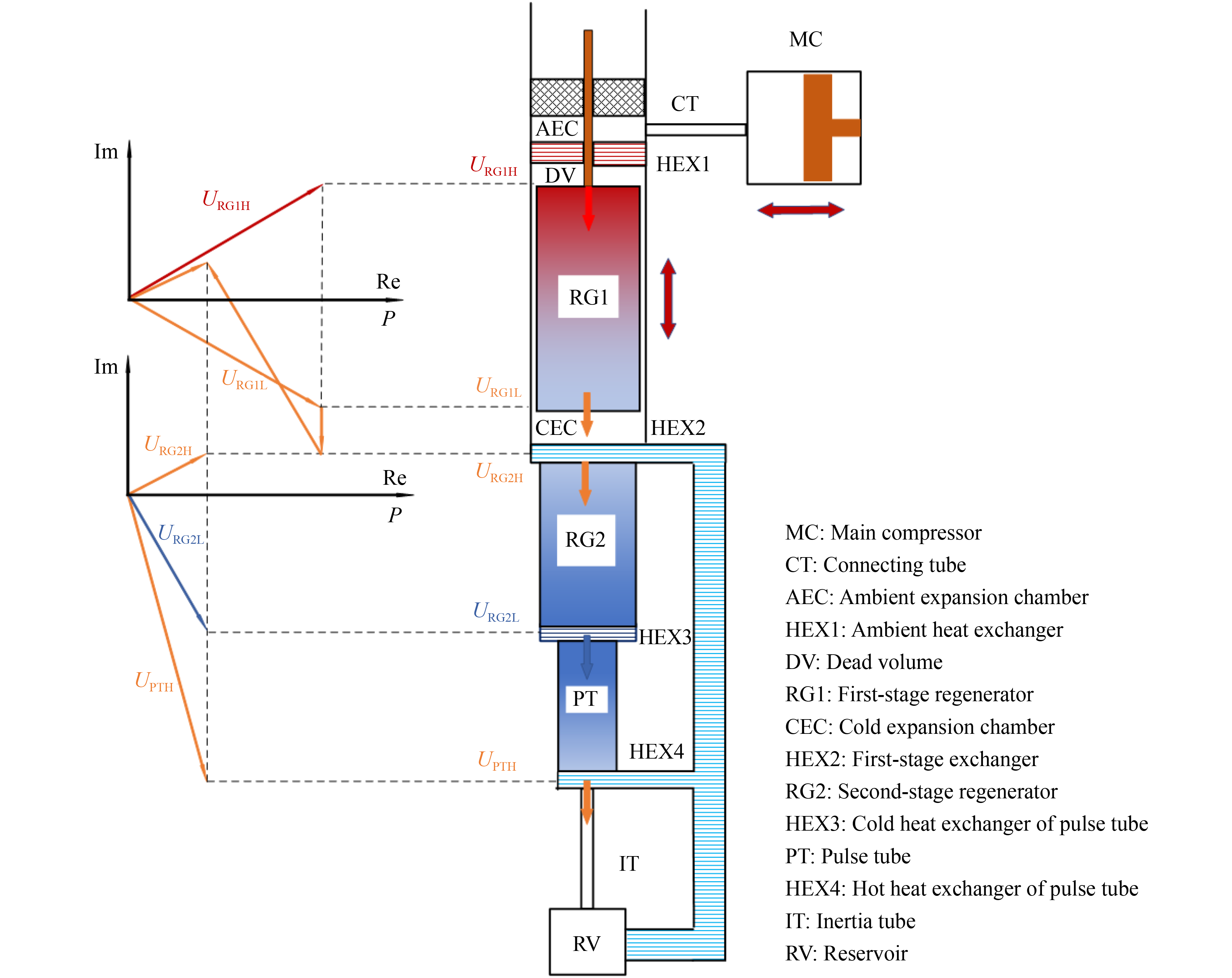Interestingly, the SPR proposed by Raytheon in 1999 [
15–
17] has been studied for over 20 years. To satisfy the requirements of different working temperatures and cooling capacities, Raytheon has developed three types of SPR as follows: High Capacity Raytheon Stirling/Pulse Tube 2-Stage (HC-RSP2) working at 35 K/85 K, Mid Capacity Raytheon Stirling/Pulse Tube 2-Stage (MC-RSP2) working at 58 K/110 K, and Low Temperature Raytheon Stirling/Pulse Tube 2-Stage (LT-RSP2) working at 10 K/55 K [
18]. In 2014, Raytheon designed a Compact Inline Stirling/pulse tube two-stage refrigerator (CI-RSP2), which can provide 4.5 W power at 70 K plus 0.25 W power at 20 K with an input power of 208 W [
19]. During the design of the SPR, Raytheon proposed that the SPR has unique thermodynamic advantages in its ability to shift cooling capacity between its two stages through the dynamic adjustment of the first Stirling stage displacer phase, thereby giving the SPR a degree of working flexibility. Further, Guo et al. developed an ideal thermodynamic model of SPR to analyze the effect of the displacer phase on cooling capacity shift [
20]. Moreover, Chao et al. proposed five different working states of SPR, and also established the boundary range [
21]. In 2019, Liu et al. designed an SPR working at 35 K/85 K, and the cooling capacity of the SPR was 1.16 W at 35 K plus 7.25 W at 85 K with an input power of 234.6 W [
22]. In 2021, Liu et al. proposed a theoretical model considering the significant factors affecting the overall performance, as well as a numerical model of the SPR [
23,
24].















